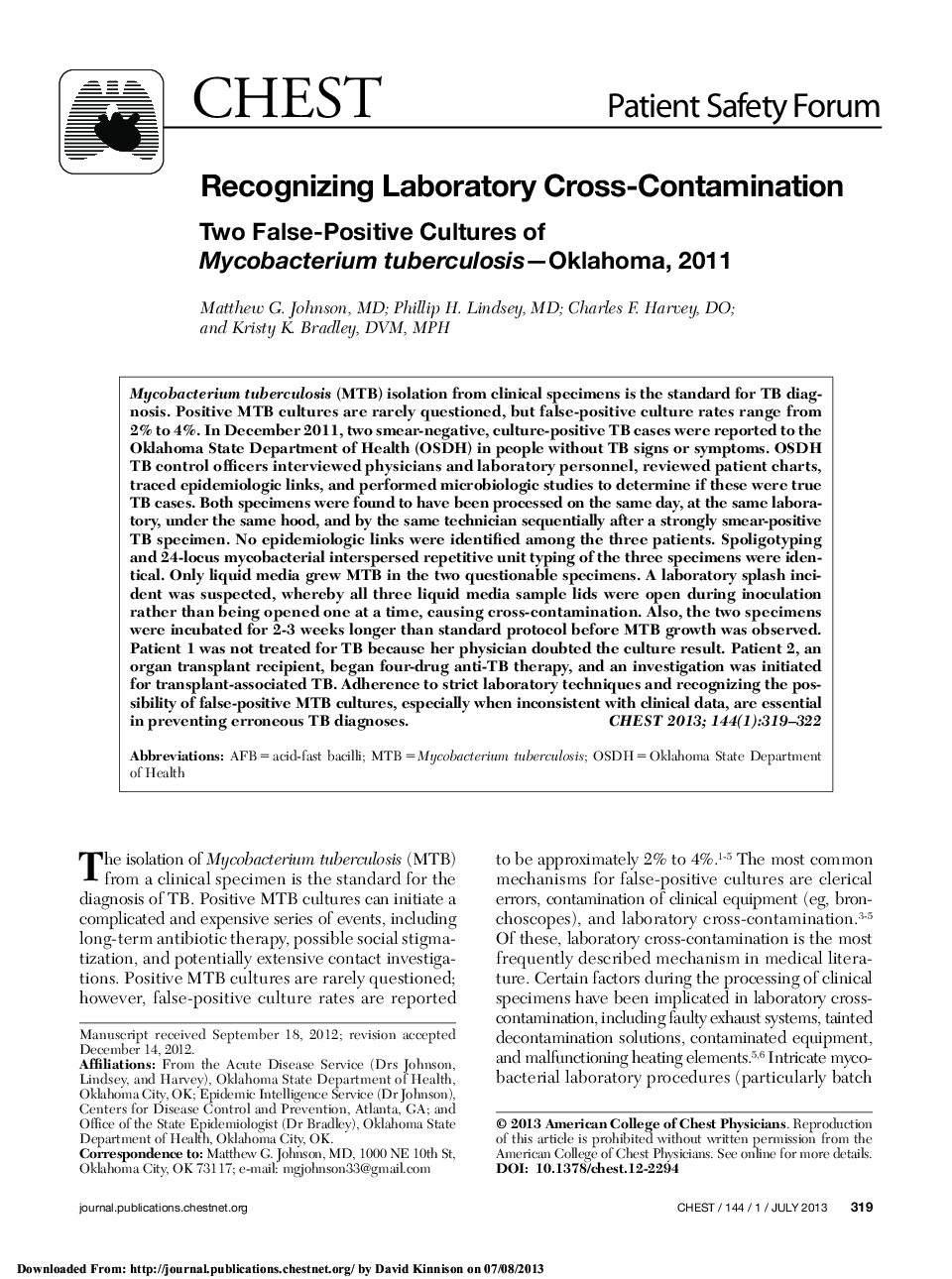| Article ID | Journal | Published Year | Pages | File Type |
|---|---|---|---|---|
| 5955769 | Chest | 2013 | 4 Pages |
Abstract
Mycobacterium tuberculosis (MTB) isolation from clinical specimens is the standard for TB diagnosis. Positive MTB cultures are rarely questioned, but false-positive culture rates range from 2% to 4%. In December 2011, two smear-negative, culture-positive TB cases were reported to the Oklahoma State Department of Health (OSDH) in people without TB signs or symptoms. OSDH TB control officers interviewed physicians and laboratory personnel, reviewed patient charts, traced epidemiologic links, and performed microbiologic studies to determine if these were true TB cases. Both specimens were found to have been processed on the same day, at the same laboratory, under the same hood, and by the same technician sequentially after a strongly smear-positive TB specimen. No epidemiologic links were identified among the three patients. Spoligotyping and 24-locus mycobacterial interspersed repetitive unit typing of the three specimens were identical. Only liquid media grew MTB in the two questionable specimens. A laboratory splash incident was suspected, whereby all three liquid media sample lids were open during inoculation rather than being opened one at a time, causing cross-contamination. Also, the two specimens were incubated for 2-3 weeks longer than standard protocol before MTB growth was observed. Patient 1 was not treated for TB because her physician doubted the culture result. Patient 2, an organ transplant recipient, began four-drug anti-TB therapy, and an investigation was initiated for transplant-associated TB. Adherence to strict laboratory techniques and recognizing the possibility of false-positive MTB cultures, especially when inconsistent with clinical data, are essential in preventing erroneous TB diagnoses.
Related Topics
Health Sciences
Medicine and Dentistry
Cardiology and Cardiovascular Medicine
Authors
Matthew G. MD, Phillip H. MD, Charles F. DO, Kristy K. DVM, MPH,
